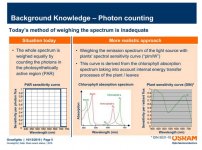The 860's are designed as a retrofit lamp for 1000w metal halide magnetic ballasts, and are vertical-mount only. I would think that they are probably also compatible with a 1000w hps mag ballast with the ignitor removed, but I really haven't looked into them that closely. There is at least one company building an electronic ballast for them, but the CDM lamps are all low-frequency only lamps, so they will not work on standard electronic ballasts.
Your point about the excessive PAR levels of some LED fixtures is right on the nose. That is what I was alluding to in the post above when I mentioned using multiple low-wattage fixtures spread evenly over the top of the canopy. What I, and several others, found a couple of years ago was that the trend toward higher-wattage LED fixtures with the same footprint was counterproductive. For instance, the Lumigrow ES330 has the power to bleach the shit out of the plants immediately below it, but fails to reach the edges of a 30x30 tent. Spreading (4) of the ES165s over the top of the canopy would be way more preferable than running (2) ES330s over the same area. So what did Lumigrow do? They obsoleted the ES165 and kicked the power up on the ES330 in the same size envelope.......
Your point about the excessive PAR levels of some LED fixtures is right on the nose. That is what I was alluding to in the post above when I mentioned using multiple low-wattage fixtures spread evenly over the top of the canopy. What I, and several others, found a couple of years ago was that the trend toward higher-wattage LED fixtures with the same footprint was counterproductive. For instance, the Lumigrow ES330 has the power to bleach the shit out of the plants immediately below it, but fails to reach the edges of a 30x30 tent. Spreading (4) of the ES165s over the top of the canopy would be way more preferable than running (2) ES330s over the same area. So what did Lumigrow do? They obsoleted the ES165 and kicked the power up on the ES330 in the same size envelope.......



